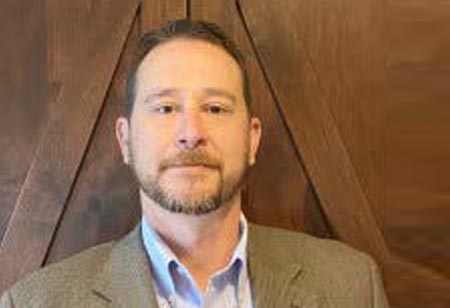Shane Menefee is a strategic leader with a proven track record in developing cost-effective environmental health and safety (EHS) programs and implementing sustainable cultural change management across all levels of an organization. He brings over two decades of experience in managing global facilities, property, and EHS operations.
In an interview with Environmental Business Review, Menefee sheds light on EHS management systems and emphasizes the importance of implementing sustainable and cultural change for building a livable future.
Could you talk to us about EHS and the reasons behind its significance in an organization?
Every organization has a social responsibility toward the security of their neighborhoods and the customers who purchase their products. As manufacturers, we are responsible to take the lead and drive positive environmental change because we have the knowledge and resources to create the most meaningful impact. We are tasked with understanding and mitigating the impact our business has on the communities where our products are used.
On the health and safety side, we are committed to creating a secure and healthy workplace to ensure that our staff returns home safely. Their families rely on us to provide a workplace that minimizes risks and supports the success of everyone who works with us. Fostering such an environment will empower our employees to enjoy their personal and family time.
What are some of the key trends you have noticed in recent years that are impacting EHS practices?
Previously, the environmental component of my role was how we maintain compliance with regulations. Whether that is the EPA in the U.S. or its counterpart in the EU, wherever we are in the world, we have to abide by a set of rules. This landscape has evolved significantly from focusing solely on compliance to broader initiatives. Businesses now source materials responsibly, assess product life cycles, and minimize product impact once they are introduced to the market. This approach allows consumers to actively contribute to sustainable practices.
As manufacturers, we are responsible to take the lead and drive positive environmental change because we have the knowledge and resources to create the most meaningful impact
However, industries are under pressure to proactively pursue substantial improvements due to their significant energy consumption. For the majority of companies, this is a significant conversation that takes place at individual and C-suite executive levels. The evolving customer expectations now demand organizations to be able to make the right decisions proactively.
As far as the health and safety aspect, organizational leaders now recognize it as more than just cost-cutting initiatives. They see them as a way to reduce expenses and as an employee benefit, demonstrating a genuine expression of care. This transformation places a high value on employees as important assets and motivates them to come to work.
Can you share a project or initiative where you have successfully incorporated new trends to improve EHS practices?
If you are not taking actions, then your plans are just words, and 10 to 15 years ago, these words were acceptable, but that is not the case today. If you are not constantly taking charge, then you are not creating positive change. We have successfully improved employee engagement by encouraging them to participate in identifying and implementing solutions to enhance their workspace.
On the environmental front, we have been actively investing in renewable energy projects, both independently and in partnership with other businesses and communities. These efforts contribute to sustainable improvement rather than just depleting it.
How do you envision the field of EHS evolving over the next couple of years? What challenges and opportunities do you expect?
I believe the future lies in increased transparency and measurable progress toward environmental and safety commitments. We will see companies setting ambitious and challenging goals, even if the solutions to achieve them are not yet available. As organizations showcase their progress, customers, stakeholders, and employees will hold them accountable for meeting their commitments.
What advice would you give to your fellow peers and aspiring professionals in environmental health and safety?
My advice is to embrace transparency and engagement. Clearly communicate targets and objectives to foster a positive behavioral culture and involve employees in driving change. Measurement and reporting are crucial to instigate action. As EHS professionals, we have a special opportunity to make a significant impact on both the environment and employee well-being. Let’s take the lead in creating a safer, more sustainable future by proactively implementing positive changes.


